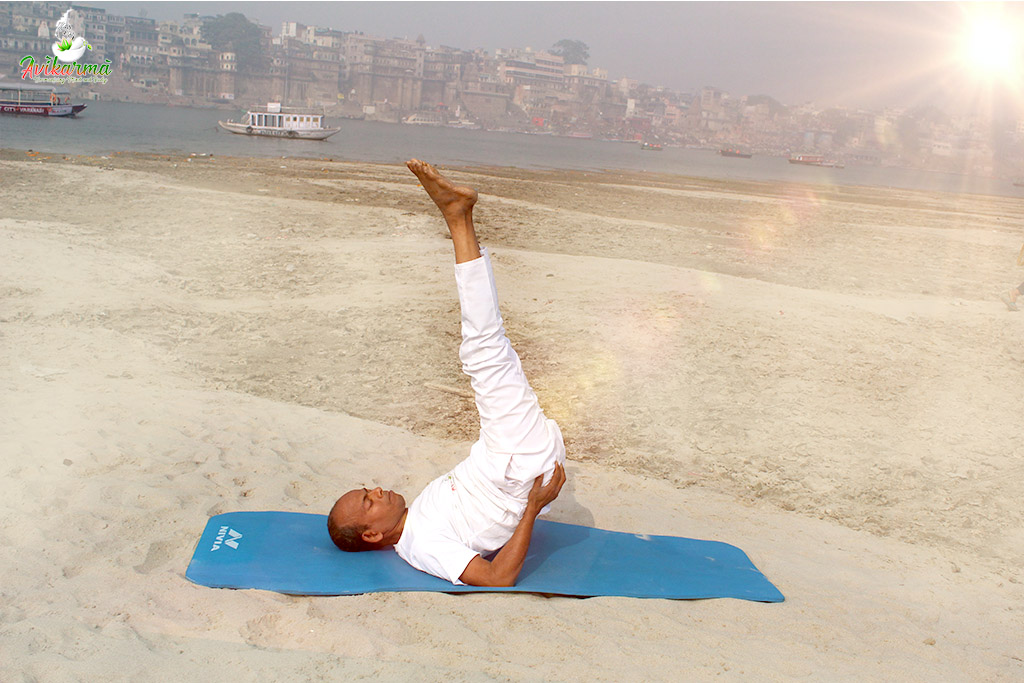About Viparita Karani
Viparita Karani (Legs Up the Wall Pose) is a Sanskrit term that refers to the ‘action of inverting’. Thus it is more of a general action rather than an asana and hence the name does not end with ‘asana’.
Viparita Karani is an inversion under the category of shoulder stand poses, but is easier to hold for extended periods of time. It is also considered as a restorative pose and hence releases tension in the body and mind.
Viparita Karani is considered a base pose as viparita karani variations can be derived from this pose. Viparita Karani uses props to make the pose accessible and easier for students who may not have the needed strength, flexibility or balance to do the same pose without props.
Viparita Karani is considered a warm-up yoga pose to prepare the body for more intense yoga poses / yoga flow. The restorative nature of this posture gets blood flowing to parts of the body that need it, making it good for most any ailment including arthritis, high or low blood pressure, respiratory ailments, and menopause.
Regulates blood pressure. Helps treat cardiac disorders. Helps treat ear and eye ailments, stressrelated headaches, and migraines. Relieves palpitations, breathlessness, asthma, bronchitis, and throat ailments. Alleviates arthritis and cervical spondylosis. Relieves indigestion, diarrhea, and nausea. Helps treat kidney disorders. Prevents varicose veins.
- Begin by standing close to the wall while facing the wall. Have your toes touch the wall ending at the floor.
- Inhale and sit on the floor continuing to have the toes touching the wall with knees bent. Exhale and place the palms on the floor.
- Inhale and slowly go down on your back and lie down having the shoulders close to the floor with knees still bent. Exhale completely relaxing the entire back on the floor.
- Inhale again and raise the legs and bring them on the wall, slowly adjusting the hips in order to be bring the tail bone close to the wall. Exhale completely adjusting the hips and the legs and remain here.
- Make sure the legs up the wall are perpendicular to the upper body and the toes are pointing downwards with the support of the heels on the wall.
- Find the right spot by moving your support until you know the right placement that feels comfortable for you.
- The neck, shoulders and chest should be completely relaxed as this pose is a restorative one and should be done with ease and comfort.
- Stay here with eyes closed once you are sure the body is comfortable and begin the slow rhythmic breathing with your muscles relaxed. Remain here for about 12 breaths to get maximum benefit from this posture.
- Inhale and slowly move your hips backwards and release the legs and place the feet on the floor close to the wall and relax the lower back completely.

